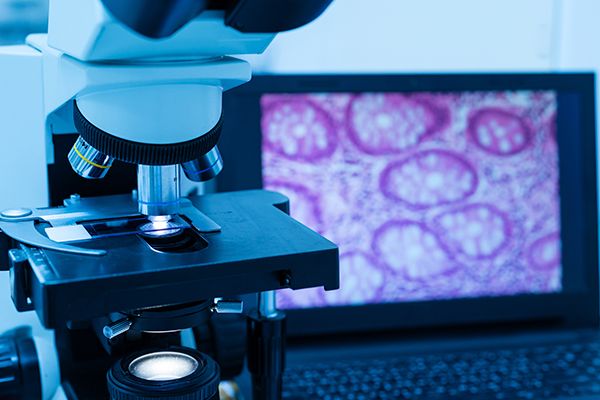
Transformed lymphoma occurs when an indolent lymphoma turns into a more aggressive one. A transformation occurs when genetic changes in the indolent lymphoma cells cause them to begin growing faster and behaving more aggressively.
Lymphoma Research Foundation Grantee Raphael Eric Steiner, MD (University of Texas MD Anderson Cancer Center) discusses what symptoms patients should monitor or what diagnostic tests are conducted to detect when follicular lymphoma (FL) has transformed to diffuse large B-cell lymphoma (DLBCL).
How do physicians determine when follicular lymphoma (FL) has transformed to diffuse large B-cell lymphoma (DLBCL)? What kind of tests or symptoms help doctors monitor this?
Transformed follicular lymphoma (tFL) refers to the evolution of slow-growing (indolent) follicular lymphoma, to fast-growing (aggressive) lymphoma, such as diffuse large B cell lymphoma (DLBCL). Currently, a biopsy is the only reliable manner to diagnose transformation. Patients with FL presenting suspicious signs and symptoms and/or findings on computed tomography (CT) or positron emission tomography/computed tomography (PET/CT) should have a biopsy to rule out a transformation of their FL.
Patients with tFL frequently display features commonly seen in patients with DLBCL, such as rapid enlargement of lymph node(s), lymphoma involvement outside lymph node(s) (extranodal site(s)), B-symptoms (fever, unintended weight loss, drenching night sweats), sudden weakness stopping from working or being active and elevated lactate dehydrogenase (LDH) in the blood.[1]
In case of suspicion of transformation, a workup including clinical examination, labs, and imaging with a PET/CT is warranted. The scan provides information about the areas of involvement and their metabolic activity (hunger to take up more marked sugar than normal cells). Biopsy should aim to sample a lymph node with the highest activity on PET/CT.[2]
In most cases of tFL, the analysis of the biopsy (pathology) will be consistent with DLBCL. If a diagnosis of tFL is confirmed, management with observation (“watch and wait”) is not an option considering its aggressive biology. Consequently, further workup similar for DLBCL will be necessary and include PET/CT (if not already done), laboratory studies, cardiac evaluation such as an echocardiogram, in some cases bone marrow biopsy, fertility counseling, and assessment of the need for preventive therapy for brain and spinal cord.
The choice of therapy will depend on several factors, including prior therapy/ies received for the FL, fitness/age, comorbidities such as heart disease, and goals of care. For most patients who were not previously exposed to significant doses of doxorubicin, the primary standard of care therapy will be R-CHOP therapy (rituximab, cyclophosphamide, doxorubicin, vincristine, and prednisone). Enrollment in a clinical trial should be evaluated.
Finally, in the study of Wang et al., DLBCL patients with concurrent other indolent lymphoma had similar outcomes compared with patients with DLBCL alone.[3]
- Wagner-Johnston, N.D., et al., Outcomes of transformed follicular lymphoma in the modern era: a report from the National LymphoCare Study (NLCS). Blood, 2015. 126(7): p. 851-7.
- Strati, P., et al., Pre-treatment maximum standardized uptake value predicts outcome after frontline therapy in patients with advanced stage follicular lymphoma. Haematologica, 2020. 105(7): p. 1907-1913.
- Wang, Y., et al., Impact of concurrent indolent lymphoma on the clinical outcome of newly diagnosed diffuse large B-cell lymphoma. Blood, 2019. 134(16): p. 1289-1297.
Download the Transformed Lymphoma Fact Sheet
Lymphoma Research Foundation is committed to providing those impacted by lymphoma with the resources they need to understand their disease. To ensure that patients and their loved ones make the most informed decisions about their care, the Foundation developed a comprehensive fact sheet about transformed lymphomas. Download Now >

